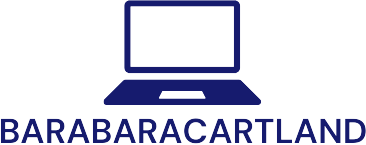Table of Contents
ToggleTax season can feel like a high-stakes game of dodgeball, especially for small business owners. With numbers flying and deadlines looming, it’s easy to get overwhelmed. But fear not! There are savvy strategies that can help dodge those hefty tax bills and keep more cash in your pocket.
Overview of Tax Saving Strategies for Small Business Owners
Effective tax saving strategies empower small business owners to manage their tax liabilities efficiently. The first strategy involves maximizing deductions. Deductions for business expenses significantly lower taxable income. Claiming all eligible expenses, such as supplies and utilities, plays a crucial role.
Another key strategy focuses on retirement plans. Establishing a retirement plan allows contributions to be tax-deductible. Options such as Simplified Employee Pension (SEP) IRAs or 401(k) plans provide savings while benefiting employees.
Utilizing accounting methods strategically can further reduce taxes. Small businesses often choose between cash and accrual accounting methods. Cash accounting permits the deferral of income, while accrual accounting recognizes revenues when earned. Choosing the right method may lead to significant tax savings.
Depreciation strategies also contribute to tax efficiency. Accelerated depreciation methods, like Section 179, allow immediate expense deductions for equipment purchases. This strategy helps retain more cash upfront.
Employing tax credits gives small business owners additional opportunities for savings. For example, credits for hiring veterans or investing in renewable energy sources can reduce tax liability. Researching available federal and state credits ensures no missed opportunities.
Incorporating an accountable reimbursement plan for employee expenses can also yield tax benefits. This plan allows businesses to reimburse employees for out-of-pocket expenses, ensuring these amounts remain untaxed. Not only does this streamline employee finances, but it also reduces the business’s taxable income.
Each of these strategies presents an avenue for small business owners to minimize tax burdens while reinforcing operational cash flow.
Common Tax Deductions for Small Businesses

Small businesses can significantly reduce their tax liabilities by effectively utilizing available tax deductions. Awareness of these deductions allows owners to keep more cash in their pockets.
Capital Expenses
Capital expenses relate to significant purchases that benefit the business over time. Items like machinery, vehicles, and buildings qualify as capital expenses. Business owners can deduct depreciation on these assets annually. For instance, the Modified Accelerated Cost Recovery System allows for accelerated depreciation. This method enables faster write-offs for equipment purchases, turning immediate cash into future savings.
Business Operating Expenses
Business operating expenses cover the day-to-day costs of running a business. Examples include rent, utilities, internet service, and employee salaries. These expenses are fully deductible in the year incurred, which helps to lower taxable income. Additionally, costs associated with marketing and advertising campaigns also fall under this category. Keeping accurate records of these expenditures is crucial for claiming deductions. This diligence ensures business owners maximize their tax benefits effectively.
Retirement Plans and Tax Benefits
Small business owners can leverage retirement plans to gain significant tax advantages. Tax-deductible contributions not only build retirement savings but also lower taxable income.
Contributions to Retirement Accounts
Setting up retirement accounts like SEP IRAs or Solo 401(k)s serves to enhance tax planning. Small business owners contribute up to 25% of their income to a SEP IRA, up to a limit of $66,000 for 2023. For a Solo 401(k), they can contribute $20,500 as an employee plus an additional employer contribution, bringing the total to $66,000, depending on their income. These contributions lower taxable income, maximizing cash flow while securing retirement funds.
Tax Credits for Retirement Plans
Small business owners may also qualify for tax credits related to retirement plan expenses. The Retirement Plans Startup Costs Tax Credit allows businesses to claim up to $5,000 in initial setup costs for plans. This credit is available for expenses incurred during the first three years of the plan. Utilizing the credit can enhance cash flow and incentivize the establishment of retirement plans, benefiting both business owners and employees.
Utilizing Tax Credits Effectively
Tax credits offer small business owners valuable opportunities to reduce their tax liabilities significantly. Knowing which credits to leverage and understanding their eligibility requirements can lead to substantial savings.
Research and Development Tax Credit
R&D tax credits encourage companies to invest in new products or processes. This credit allows businesses to claim a percentage of their qualifying research expenditures. Eligible costs may include wages for employees involved in R&D, supplies used in research, and any contract research expenses. Understanding the qualification criteria ensures that businesses maximize this credit’s potential benefits. Firms actively engaged in developing new technologies or improving existing products often find this credit particularly advantageous. The potential savings can contribute to innovation by enhancing cash flow and funding further research efforts.
Energy Efficiency Tax Incentives
Energy efficiency tax incentives benefit businesses that implement sustainable practices. These incentives can reduce capital expenditures associated with energy-efficient upgrades, such as lighting or HVAC systems. Investments that significantly cut energy usage may qualify for credits or deductions. Owners can recover costs through incentives on energy-saving investments, promoting eco-friendly solutions for their businesses. Many federal and state programs offer support, making it essential for business owners to explore local options. Utilizing energy efficiency tax incentives not only lowers expenses but also aligns with responsible business practices, enhancing corporate reputation while contributing to environmental goals.
Structuring Your Business for Tax Efficiency
Choosing the right structure enhances tax efficiency for small business owners. Common options include sole proprietorships, partnerships, limited liability companies, and corporations. Each entity type carries unique tax implications. For example, corporations often face double taxation, whereas partnerships and LLCs typically pass profits directly to owners, avoiding corporate taxes. Small business owners should assess their income levels, growth potential, and personal liability before deciding.
Implementing an S Corporation election can offer substantial tax savings. This designation allows business income, deductions, and credits to pass through to shareholders. Owners benefit from avoiding double taxation on corporate income while potentially lowering self-employment tax liability. An S Corporation permits a reasonable salary to be paid to the owner, with remaining profits disbursed as dividends. It’s essential to adhere to IRS guidelines to maintain this status, ensuring compliance and maximizing tax efficiency.
Navigating the complexities of taxes can be daunting for small business owners. However with the right strategies in place it’s possible to significantly reduce tax liabilities and improve cash flow. By maximizing deductions utilizing tax credits and choosing the appropriate business structure owners can create a more favorable financial landscape.
Investing time in understanding these tax-saving strategies not only enhances financial health but also supports long-term growth. With careful planning and informed decisions small business owners can turn tax season from a stressful experience into an opportunity for savings and investment.




